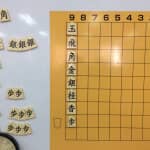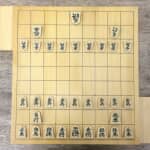4 November 2018
Things That Shogi Beginner Children Often Get Confused with: #5 Difficulty in Use of Hand Piece
*Please note that the Kanji numbers in pictures are spelled in English in the text.
The following Shogi boards have a face with files (vertical rows) numbered 1 through 9 from right to left, and ranks (horizontal rows) designated with Kanji characters, “一” (One) to “九” (Nine), from top to bottom. On the other hand, in the text, each Kanji character is replaced with an alphabet, from “a” to “i” : “一” with “a”, “二” with “b”, … and “九” with ”i”.
During Shogi games played between beginner players, they often keep their pieces in hand unused on a piece stand. The original aim of Shogi is to capture an opponent’s King. It might have changed to the one to collect and stock any pieces, but I would say the most reasonable reason is the Shogi beginner children forget they have pieces in hand or just don’t know how to use them.
I would like to introduce the important points to use pieces in hand effectively.
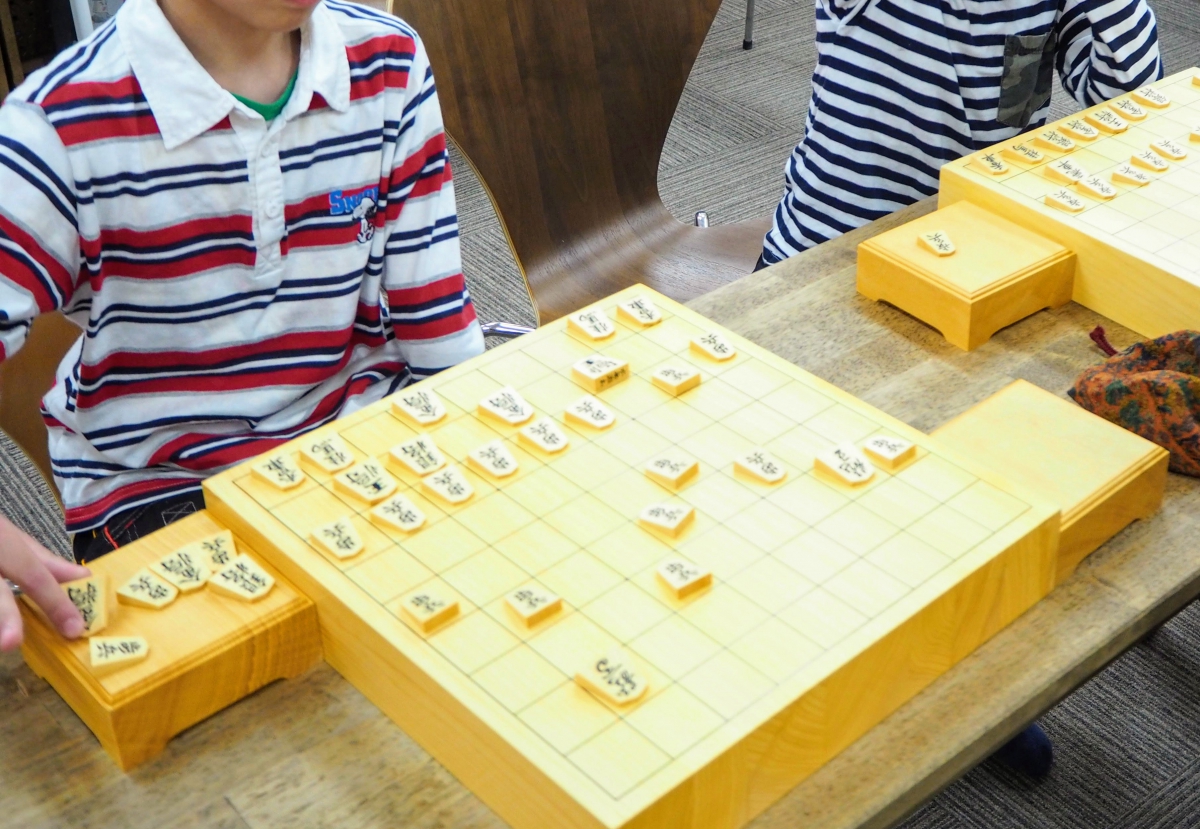
Point 1: Organise a Piece-Stand
supposed to place pieces in hand on a piece stand neatly in order for your opponent to get the whole picture of what you have. You also have to realize continually what you have. Arranging pieces on a piece stand neatly is not only for your opponent but also for yourselves.
If your piece stand messy, both you and your opponent can’t realize how many hand pieces you have.

I recommend grouping hand pieces like the above picture. Players, generally, put them in the order of pieces’ values. Some put pieces with a higher value on the top and others put them oppositely. I put Fu (Pawn) on the top.
As a basic premise, I recommend that you get into a habit of organizing pieces in hand each time you capture a piece.
Point 2: How to Use Hand Pieces
Fork
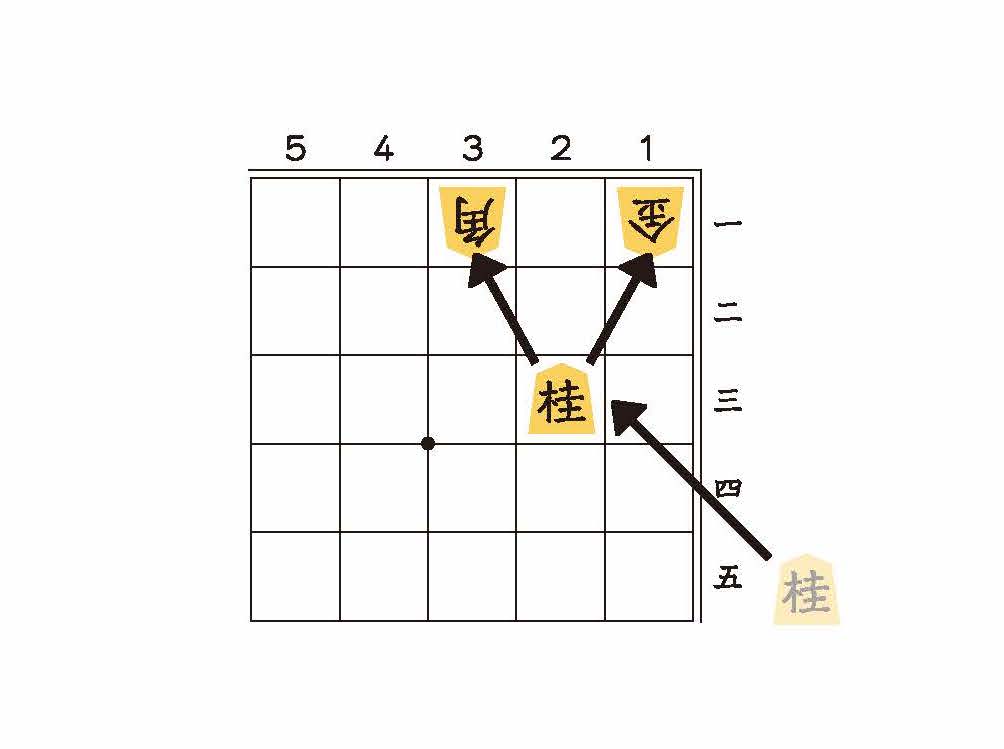 Kei (Knight) is aiming at both Kaku (Bishop) and Kin (Gold) at the same time. Fork is one of strategies to attack two pieces together, in which you move or drop a piece. Dropping a piece to fork is a great way to use a piece in hand, because you will be guaranteed to capture either of two pieces.
Kei (Knight) is aiming at both Kaku (Bishop) and Kin (Gold) at the same time. Fork is one of strategies to attack two pieces together, in which you move or drop a piece. Dropping a piece to fork is a great way to use a piece in hand, because you will be guaranteed to capture either of two pieces.
Other than Kei (Knight) shown in the above picture, Kaku (Bishop), Gin (Silver) and Hisha (Rook) are also good at attacking two pieces at the same time. The situation when you are aiming at Gyoku (King) and Hisha (Rook) together is termed Otebisha in Japanese. If you can attack Gyoku (King) and Hisha (Rook) at a time, you will get the upper hand and give damage to your opponent.
As I mentioned before, Fork is a powerful attacking technique. However, there is one thing you need to keep in mind: when you attack two pieces together and one of them is a piece of Fu (Pawn), it’s not considered Fork.
Why? Because, Fu (Pawn) is the lowest valued piece among all pieces.
Remember pieces I mentioned before as pieces which are good at Fork. They are valued more than Fu (Pawn) and it’s not worthy to use them to capture the least valued piece, Fu (Pawn).
Fu (Pawn) is actually the least valued piece, but there is a proverb saying about it oppositely. That is Ichifu Senkin, which means one Fu (Pawn) is worth a thousand pieces of Kin (Gold). When a piece of Fu (Pawn) is a decisive piece, it’s time to capture it with a piece in hand.
You may not have many chances to use a technique of Fork in a real game. However, once you got Kaku (Bishop), Gin (Silver) or Kei (Knight) as your hand pieces, let’s try to seek for a chance to fork two pieces.
Drop a Piece, Aiming at an Opponent’s Pieces
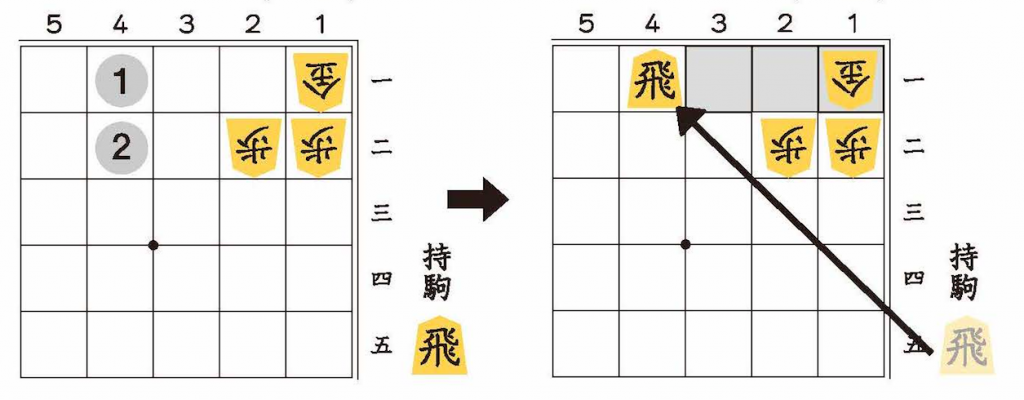
When it’s difficult to fork two pieces together, drop a piece aiming at any of the opponent’s pieces. The point here is to avoid your dropped piece from being captured. Keep in mind that Hisha (Rook) and Kaku (Bishop) can aim at the pieces from a long distance.
Aigoma
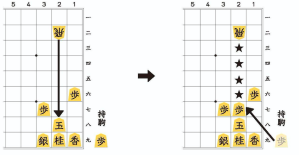
Aigoma is one of techniques. You put a piece between attacking piece and the piece under the attacking, preventing your Gyoku (King) or pieces from being captured.
Look at the above picture. In this situation, apparently, it is okay to move Gyoku (King) to the square of “3 h” or “1 h”, avoiding checking. However, these moves will lead Keima (Knight) at “2 i” to be captured for free, and will allow an opponent’s Hisha (Rook) enter your camp and get promoted.
What if you drop Fu (Pawn) on the square of “2 g”? Hisha (Rook) can’t capture your Keima (Knight). If Hisha (Rook) moves to capture Fu (Pawn), Gyoku (King) will capture the Hisha (Rook). Avoiding that, Hisha (Rook) has to stay there. Like this, you can use your pieces in hand not only for attacks but also for defenses to protect your valuable pieces.
By the way, if your dropped piece is captured just after dropping, this move is called as Muda Ai (No use interposition). This move is the same thing as throwing away your important pieces. Also, the captured piece will become your opponent’s one to reinforce his/her power. When you drop a piece as Aigoma, make sure not the make Muda Ai.
Point 3: Remember Techniques to Use Fu (Pawn)
Fu (Pawn) is the largest in number, 18 pieces, on a board. The chance you capture a piece to become your piece in hand mostly goes with Fu (Pawn).
How effectively you can use Fu (Pawn) can be one benchmark for measuring your ability to use pieces in hand.
I am going to introduce some techniques to use Fu (Pawn), which Shogi beginner children can easily use.
Note: When you use a technique making a good use of Fu (Pawn), make sure there isn’t another Fu (Pawn) on the file you are about to drop Fu (Pawn). As you know, “Nifu” (Double Fu (Pawn)) is the most common mistake for Shogi beginners.
Tarefu (Dangling Fu (Pawn))
Tarefu is a technique to drop Fu (Pawn) on the fourth rank, aiming to make it To-Kin (Promoted Pawn). Getting promoted, the dropped Fu (Pawn) becomes to move in the same way as Kin (Gold) does. Captured after the promotion, it will return to the original Fu (Pawn) as an opponent’s piece in hand.

Awase-No-Fu (Opposing Fu (Pawn))
Awase-No-Fu is a technique to make your opponent capture your dropped Fu (Pawn) dropped in front of the opponent’s Fu (Pawn). It’s like a decoy. Making your opponent to capture your dropped Fu (Pawn) and to give you a desirable space, you will move pieces just as planned.
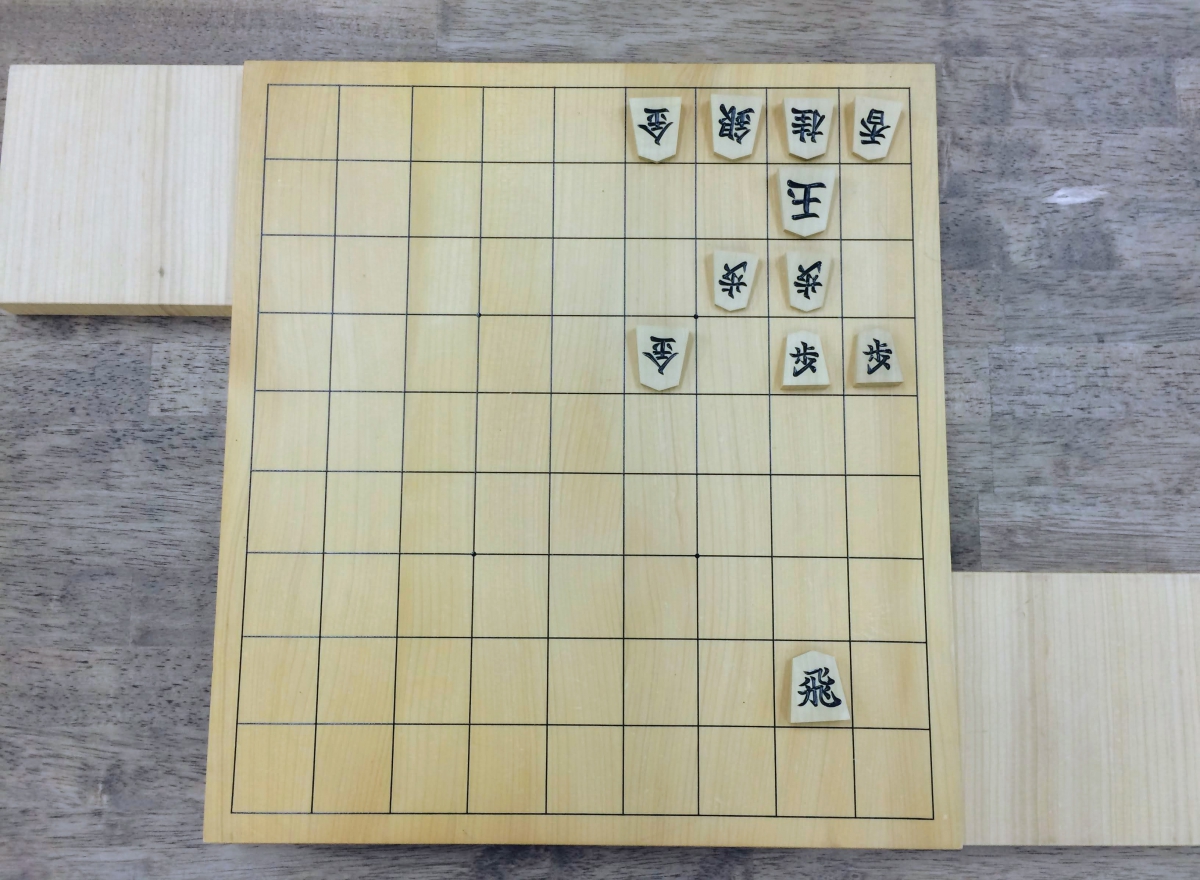
Tataki-No-Fu (Striking Fu (Pawn))
Tataki-No-Fu is similar to Awase-No-Fu. The difference between them is whether you drop Fu (Pawn) in front of your opponent’s Fu (Pawn) or not. In the case of Awase-No-Fu, you drop Fu (Pawn) just ahead of your opponent’s Fu (Pawn). On the other hand, in Tataki-No-Fu, you drop Fu (Pawn) ahead of any of the pieces other than Fu (Pawn). The name of “Striking” sounds unusual, doesn’t it? Be sure not to strike a piece on a board.
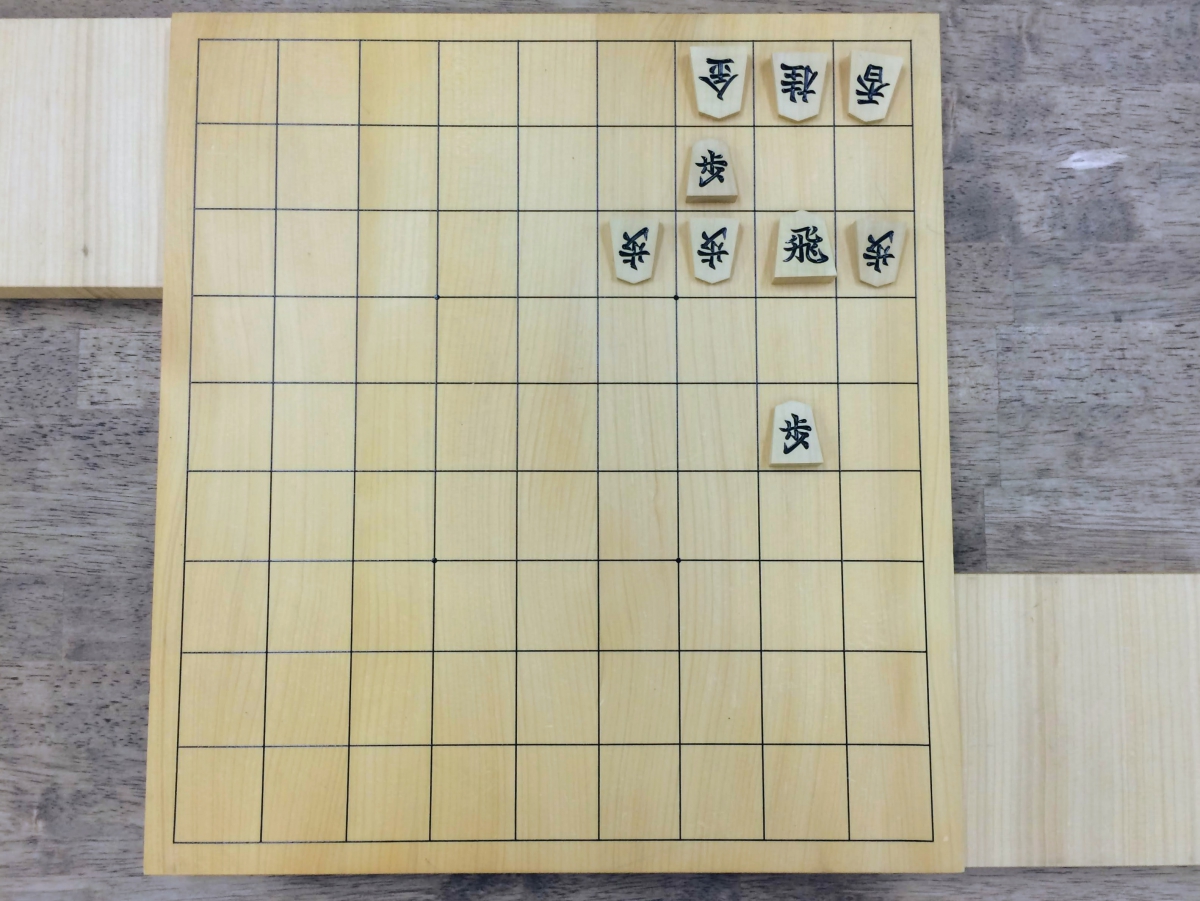
Sokofu (Bottom Fu (Pawn))
Sokofu is a technique to drop Fu (Pawn) on the square of a bottom rank of your camp. There is a Shogi proverb, Kinsoko no Fu wa iwa yori katashi, which means “Fu (Pawn) anchored Kin (Gold) is more solid than a rock”. Among Sokofu, Fu (Pawn) dropped just beneath Kin (Gold) makes a very strong defense.
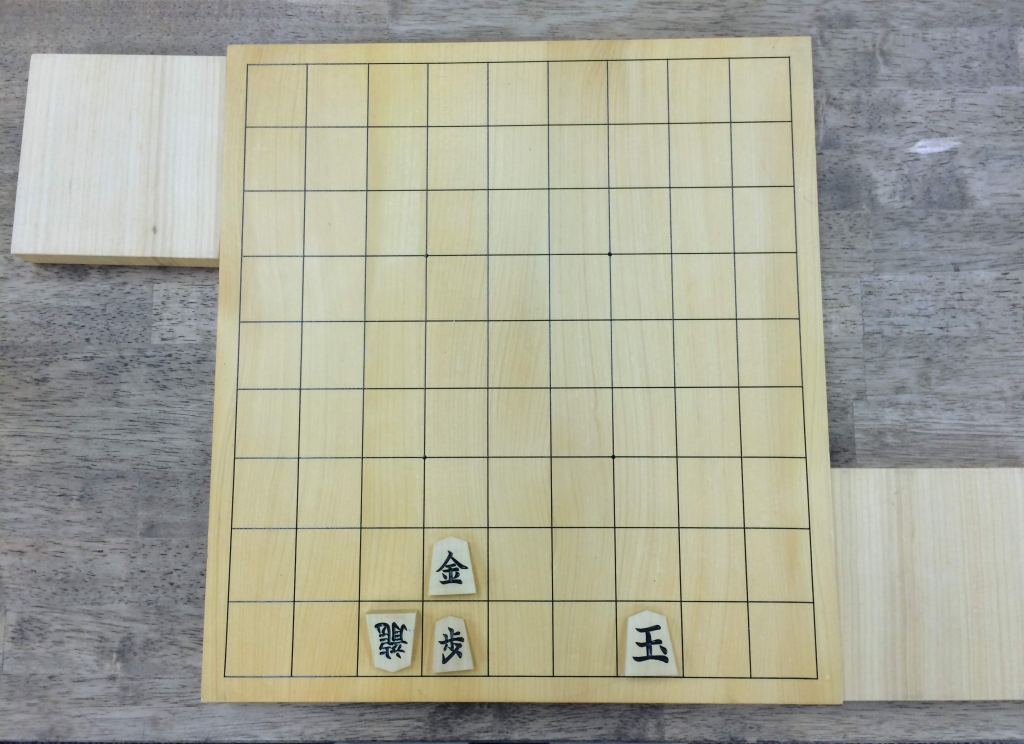
In this lesson, we dealt with problems of the use of pieces in hand and I provided the solutions for them. Is everything clear? I believe that as long as you know the effective use of pieces in hand, you won’t lose a game with many pieces in hand left. It’s important to capture your opponent’s pieces. Equally, it’s also important to know how to use your pieces in hand effectively.
The contents of this lesson is included in our textbook, “Shogi Lesson Book for Beginners Vol. 2” produced by Akiko Nakakura, a ladies professional player.

